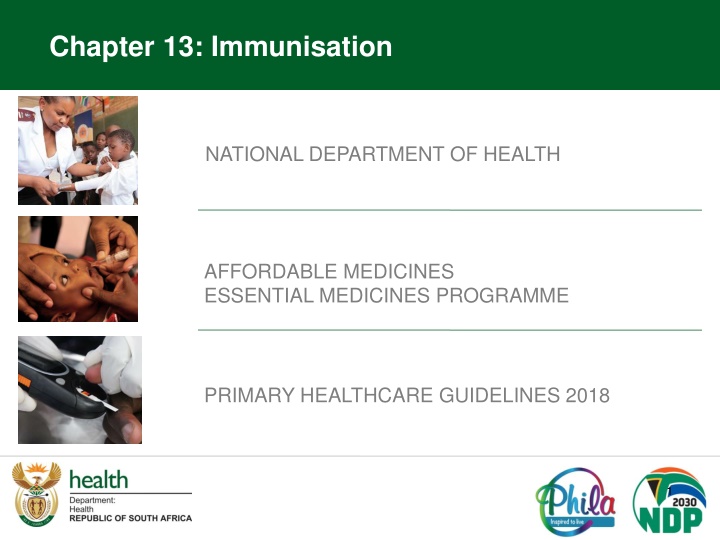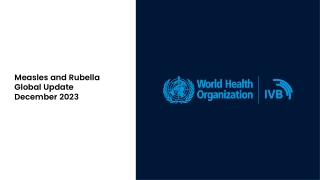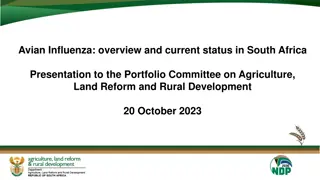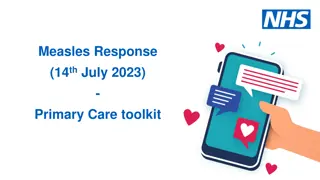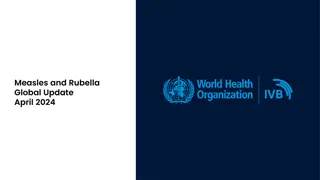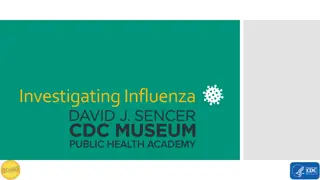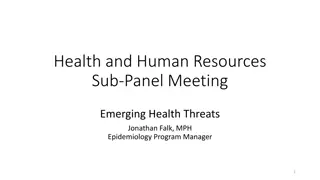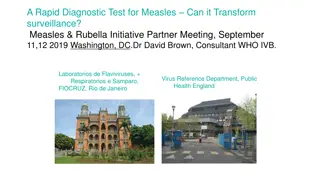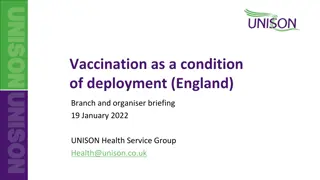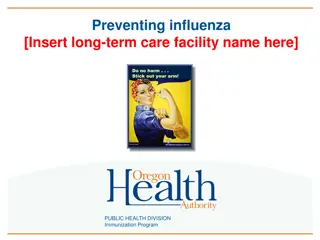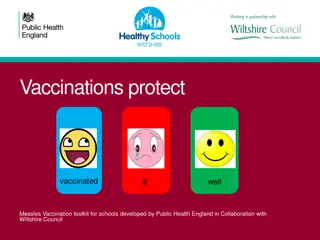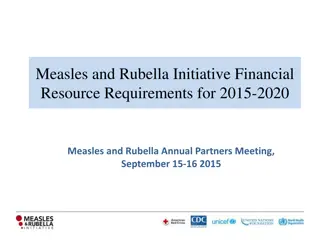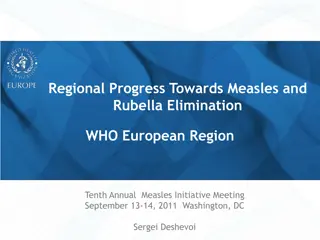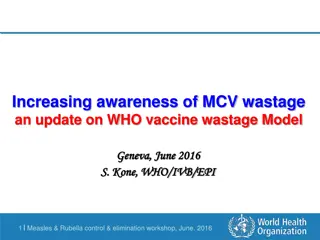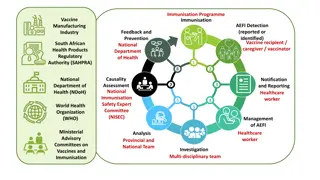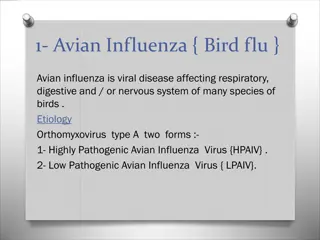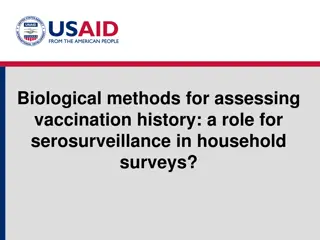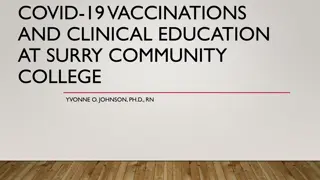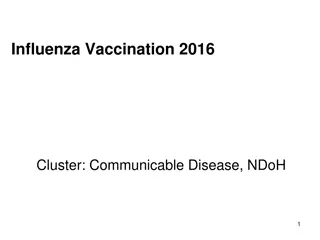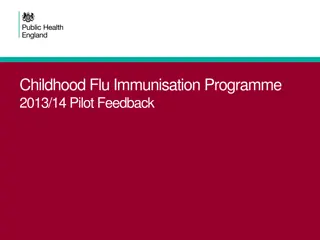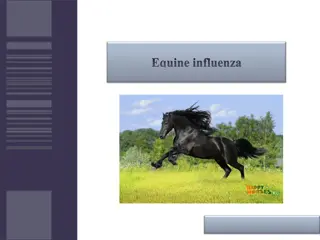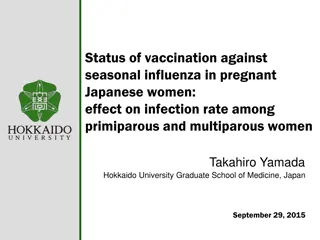Immunisation Guidelines 2018: Measles and Influenza Vaccination Updates
The National Department of Health's 2018 Primary Healthcare Guidelines detail changes in immunisation practices, including updates on measles and influenza vaccines. Changes in administration, dosage, and indications are highlighted to align with current healthcare recommendations.
Download Presentation

Please find below an Image/Link to download the presentation.
The content on the website is provided AS IS for your information and personal use only. It may not be sold, licensed, or shared on other websites without obtaining consent from the author.If you encounter any issues during the download, it is possible that the publisher has removed the file from their server.
You are allowed to download the files provided on this website for personal or commercial use, subject to the condition that they are used lawfully. All files are the property of their respective owners.
The content on the website is provided AS IS for your information and personal use only. It may not be sold, licensed, or shared on other websites without obtaining consent from the author.
E N D
Presentation Transcript
Chapter 13: Immunisation NATIONAL DEPARTMENT OF HEALTH AFFORDABLE MEDICINES ESSENTIAL MEDICINES PROGRAMME PRIMARY HEALTHCARE GUIDELINES 2018 1
EVIDENCE Please access the National Essential Medicines List Committee (NEMLC) report for detailed evidence (including rationale, references and costings) informing decision-making on medicine addition, amendments and deletions: http://www.health.gov.za/index.php/standard-treatment-guidelines-and- essential-medicines-list/category/285-phc DISCLAIMER This slide set is an implementation tool and should be used alongside the most recently published STG available on the EML Clinical Guide Application. This information does not supersede or replace the STG itself. 2
Measles vaccine CHANGES Measles vaccine currently on tender is given subcutaneously (measles vaccine, IM no longer manufactured). Now given at 6 months AND 12 months. REASON Alignment with EPI schedule Note: Measles vaccine is increasingly only available in combination with rubella vaccine. South Africa is likely to migrate to the combination vaccine in the next few years. 3
BCG DESCRIPTION Bacillus Calmette-Gu rin Protects against TB meningitis and miliary TB in children < 2 years of age. CHANGES Contra-indications to receiving BCG Changed from children with symptomatic HIV infection (Stage 3 and 4) to include ALL children known to be HIV-infected. REASON Concern regarding risk of disseminated BCG disease in HIV-infected children. Note: BCG should not be delayed in HIV- exposed infants with unknown status. 4
Influenza Vaccination: indications CHANGES All women who are pregnant at the time of the annual immunisation immunized. campaign should be Persons with the following risk factors may be offered immunisation during the annual campaign HIV infection Chronic cardiac or pulmonary conditions Age > 65 years REASON Alignment with NDoH/NICD/NHLS: Healthcare worker s handbook on influenza. Although it is recommended that healthcare workers are vaccinated against influenza, they will not be provided with publically funded vaccines unless they fall within any of the designated high risk groups 5
Influenza Vaccination: dosage CHANGES Children 6 months up to 3 yrs: 0.25mL IM, 2 doses 4 weeks apart during first year of immunisation, thereafter one dose per annum. REASON Children aged 6 months through 8 years: - require 2 doses of influenza vaccine (administered 4 weeks apart) during their first season of vaccination to optimize response - a single dose may be insufficient for an adequate immune response in young children who have not been exposed to natural influenza infection. Children 3 9 yrs: 0.25mL IM, 2 doses 4 weeks apart during first year of immunisation, thereafter one dose per annum. 6
